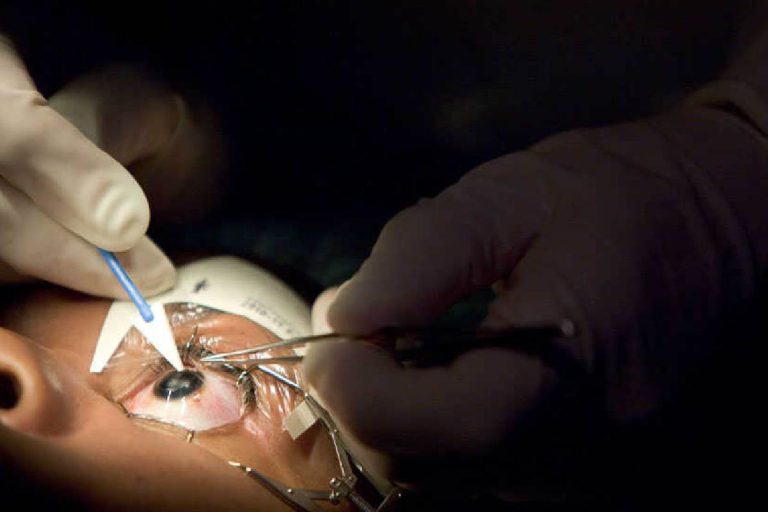How LASIK Reshapes Vision: The Role of the Flap Explained
Laser-Assisted in Situ Keratomileusis, or LASIK, has revolutionized vision correction methodologies worldwide, standing as a beacon of hope for millions who grapple with refractive errors. This surgical procedure focuses on correcting myopia, hyperopia, and astigmatism by reshaping the corneal tissue. The development of the LASIK flap, an insignificant part that significantly contributes to the procedure’s efficacy, is the cornerstone of this life-changing experience. The orchestration of LASIK involves meticulously adjusting the corneal shape to ensure that light entering the eye focuses directly on the retina, resulting in markedly clearer vision and effectively reducing dependency on glasses or contact lenses.
Table of Contents
What is the LASIK Flap?
A crucial component of the surgery, the LASIK flap is painstakingly created at the beginning of the process. This thin, hinged flap is a vital aspect of the surgery because it is a protective cover that facilitates healing post-surgery. According to the insightful details offered by Waite Vision, the flap acts much like a biological bandage, safeguarding the delicate corneal tissues as they undergo transformation and repair. The creation of the flap is executed with exceptional precision, and its overall quality is vital in dictating not only the healing speed but also the ultimate vision improvement experienced by patients. By ensuring minimal interference with the eye’s surface, the flap allows surgeons to access the deeper corneal layers with negligible disruption, fostering a conducive environment for rapid recovery and optimal results.
Different Types of LASIK Flaps
In LASIK surgery, the flap can be created through two predominant methods: using a microkeratome or utilizing a femtosecond laser, commonly referred to as bladeless LASIK. The microkeratome technique employs a precision surgical instrument gently slicing the corneal tissue to form the flap. Conversely, the bladeless approach uses a femtosecond laser to achieve the same outcome, offering higher precision and potentially reducing the risk of complications. Each method possesses distinct benefits and is carefully chosen based on individual patient needs and the surgeon’s expertise. The choice between these methods may influence the surgery’s efficacy and the patient’s comfort, with some patients experiencing a faster recovery with the laser approach due to reduced tissue stress.
Significance of the Flap in Recovery
The integrity and positioning of the LASIK flap play a pivotal role in the healing process and the overall success of vision correction. A properly constructed and positioned flap minimizes the potential for post-surgical complications such as dry eyes, infection, or night-time halo effects. The protective function of the flap accelerates the healing process, with many individuals witnessing significant improvements in their vision almost immediately post-operation. The flap expedites the healing process by reducing the corneal tissue’s exposure time—a crucial factor in protecting against potential side effects. Usually, it enables patients to return to their regular activities in days.
Preparing for LASIK Surgery
Preparation is an essential pillar of a successful LASIK surgery. Prospective patients are advised to follow detailed preoperative instructions to ensure their corneas are in optimal condition for the procedure. One important recommendation is to stop wearing contact lenses weeks before surgery because they can change the cornea’s structure and affect the procedure’s outcome. Furthermore, consulting resources from respected ophthalmology societies can provide patients with comprehensive insights into physical and mental preparation for the surgery, ensuring a smoother journey from consultation to recovery.
Staying Informed with Credible Information
Staying informed through credible, authoritative sources is crucial for individuals considering LASIK surgery. Knowledge eases the anxiety associated with undergoing surgery and equips patients with the information needed to make well-considered decisions. Reputable sources from established medical authorities offer valuable insights into the LASIK procedure, detailing potential risks, benefits, and post-operative care. These resources can significantly alleviate fears that stem from common misconceptions or misinformation, enabling individuals to approach the LASIK decision-making process with clarity and confidence.
Conclusion: A Clearer Future
Understanding the function of the LASIK flap in detail is essential to understanding the broader mechanics of LASIK surgery and how it affects vision correction. Empowered with knowledge, patients can navigate the LASIK journey with reduced anxiety and heightened awareness, fostering a path towards enhanced life quality through substantial vision improvement. By leveraging credible resources, individuals better position themselves to make informed decisions that align with their health priorities and aesthetic goals, poising them for a brighter, more transparent future.


